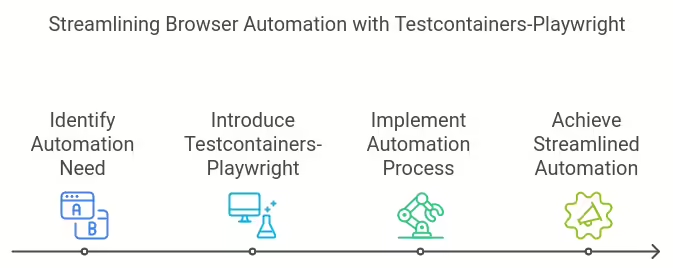Kubernetes, an open-source platform for managing containerized workloads, is a powerful tool that automates the deployment, scaling, and management of containerized applications. If you’re looking to harness the benefits of Kubernetes on CentOS 8, follow this comprehensive guide to install a Kubernetes cluster step by step.
What is Kubernetes?
Kubernetes is an open-source platform designed to manage containerized workloads and services. It automates various aspects of deploying, scaling, and managing containerized applications across diverse environments, including physical, virtual, and cloud-based infrastructures.
Prerequisites
Before embarking on the installation process, ensure you have the following prerequisites in place:
- A CentOS 8 server with a minimum of 2GB RAM and 2 CPUs.
- Root access to the server.
- Docker installed on the server.
Step 1: Update the System
Keep your system up to date by running:
sudo yum update
This command ensures that all packages on your CentOS 8 server are current.
Step 2: Install Kubernetes and its Dependencies
Install the necessary Kubernetes components using the following command:
sudo yum install -y kubelet kubeadm kubectl
This installs kubelet, kubeadm, and kubectl, the essential components for a Kubernetes cluster.
Step 3: Disable SELinux and Swap
Disable SELinux and swap on your server with the following commands:
sudo setenforce 0
sudo sed -i 's/^SELINUX=enforcing$/SELINUX=permissive/' /etc/selinux/config
sudo swapoff -a
sudo sed -i '/ swap / s/^\(.*\)$/#\1/g' /etc/fstab
Disabling SELinux is necessary to prevent interference with Kubernetes.
Step 4: Initialize the Cluster
Initiate the Kubernetes cluster with the specified pod network CIDR:
sudo kubeadm init --pod-network-cidr=10.244.0.0/16
This command initializes the Kubernetes cluster and sets the pod network CIDR.
Step 5: Set Up Your User
Set up your user to access the Kubernetes cluster:
mkdir -p $HOME/.kube
sudo cp -i /etc/kubernetes/admin.conf $HOME/.kube/config
sudo chown $(id -u):$(id -g) $HOME/.kube/config
These commands create the necessary directories and configuration files for your user.
Step 6: Install a Pod Network
Install a pod network for communication between pods:
sudo kubectl apply -f https://raw.githubusercontent.com/coreos/flannel/master/Documentation/kube-flannel.yml
This command installs the Flannel pod network.
Step 7: Join Nodes to the Cluster
On worker nodes, join them to the cluster by running the command generated during master node initialization:
sudo kubeadm join <master_node_ip>:<port> --token <token> --discovery-token-ca-cert-hash <hash>
Replace placeholders with your master node’s IP, port, token, and hash.
Step 8: Verify the Cluster
On the master node, verify that the Kubernetes cluster is running:
sudo kubectl get nodes
This command displays a list of all nodes in the cluster.
Additional Steps for Advanced Configuration
Enhance your Kubernetes cluster with advanced configurations:
- Set Up Persistent Storage: Enable persistent storage for applications by configuring storage classes and persistent volume claims.
- Configure Load Balancing: Improve performance and scalability by setting up load balancing for multiple worker nodes.
- Enable RBAC: Enhance security by enabling Role-Based Access Control (RBAC) to control user access to the Kubernetes API.
- Install Monitoring and Logging Tools: Monitor your cluster’s health and performance by installing tools like Prometheus and Grafana.
Conclusion
Congratulations! You’ve successfully installed a Kubernetes cluster on CentOS 8. Kubernetes brings unparalleled efficiency to managing applications and infrastructure. Explore additional configurations and troubleshooting steps to fully harness the power of Kubernetes for your containerized workloads. Your cluster is now ready to deploy and scale containerized applications seamlessly.
Keep Reading
-
Testcontainers and Playwright
Discover how Testcontainers-Playwright simplifies browser automation and testing without local Playwright installations. Learn about its features, limitations, compatibility, and usage with code examples.
-
Docker and Wasm Containers – Better Together
Learn how Docker Desktop and CLI both manages Linux containers and Wasm containers side by side.
-
OSINT Email Search: Everything You Need to Know
OSINT, or open-source intelligence, can help you learn more about someone. Learn everything you need to know about an OSINT email search.
-
Large Language Models in Vertical Industries: Revolutionizing Medical Documentation
Large Language Models (LLMs) have emerged as a groundbreaking force in artificial intelligence, demonstrating remarkable capabilities in understanding and generating human-like text. However, their true potential shines brightest when applied to specific challenges in vertical industries, as Garry Tan mentioned in a recent interview. This article explores the power and limitations of LLMs, focusing on…
-
Protect Your Identity: How VPNs and Temporary Numbers Secure Account Verification
In today’s interconnected world, protecting your personal information online is critical. When setting up online accounts, many websites require you to verify your identity with a phone number, and without proper precautions, this can expose your private information to cyber threats. Fortunately, you can defend your digital privacy using a combination of Virtual Private Networks…





